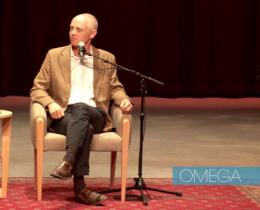You can work on undoing an unhealthy habit by exercising present-moment awareness at three distinct times: before the impulse to engage in the habit arises, during the impulse to engage in the habit, and after the impulse to engage in the habit has subsided (or been indulged). Here’s how it works.
Before: Explore what leads you to engage in the habit and make choices that can help prevent you from doing so.
Bring awareness to the habit that you want to change, and think about the situations or conditions that trigger the habit. Are there actions you can take to avoid acting out of habit? What might be an alternative, healthier choice? For example:
- If at home you frequently snack on sweets when you're feeling anxious, uncertain, confused, or lonely, ensure that you don't have sweets in the house. Purchase healthier foods, such as nuts or fruit, to have on hand when you wish to snack.
- If you typically drink more alcohol than is good for you when you get together with a particular friend, propose meeting for a hike or coffee rather than for happy hour.
- If you have a habit of procrastinating when you think about working on an important project, make a commitment to yourself to work on it for a limited time each day—say 15 to 30 minutes, twice a day.
- If you often find yourself driving impatiently or aggressively because you need to be at work or at an appointment on time, plan (if possible) to add a 10- or 15-minute cushion to your travel time, and commit to driving in a conscious and relaxed way as you begin your journey.
Once you bring awareness to the habit urge and notice how and when it typically arises, you can take steps to keep it from arising. And you can be prepared with alternative, more positive responses if it does arise.
During: Be open to the urge, craving, or difficult feeling that typically spurs the habitual behavior, gently focusing on that feeling and allowing it to come and go rather than engaging in the habit.
Pay attention to the context or environment in which the habit urge typically arises—the place, time, people, sights, sounds, and smells. For example, perhaps you find the smell of sweet, sticky buns in a mall or airport irresistible and find yourself buying and eating them without consciously deciding to do so. If so, whenever you're in a mall or airport, pay close attention to what you're experiencing. Then, when you first become aware of the craving for a bun, take a few deep breaths and bring awareness to your internal experience. Perhaps your stomach is tight or your mouth is watering. Make a conscious choice to remain aware of your direct experience, rather than acting on the craving.
Pay close attention to your bodily sensations, and notice how none of the sensations or feelings stays very long. Be aware of how the sensations ebb and flow, perhaps becoming more intense, or lessening, or fading for a while, then reappearing. Name the sensations, if this is helpful: tightness, shortness of breath, pressure, heat, racing heart. You can visualize the sensations as waves that rise and fall.
If you become aware of a strong emotion, such as anxiety, that you have responded to with comfort food in the past, name it and be open to your bodily sensations and emotions, bringing awareness to the thoughts and urges that may accompany them. Then, with kindness, let those thoughts and urges go.
Recall and connect with your deepest intention—for example, to live a conscience and healthy life—and reflect on how staying with your direct experience and meeting it with kindness and care aligns with your intentions and values. If you feel like eating something, choose something healthful. And, if you can, prepare in advance to make an alternative and healthier choice the next time you feel the craving.
After: If you engaged in the habit, you can consciously extend yourself kindness and forgiveness, rather than compounding an unhealthy habit with negative judgments or harsh self-criticism.
If you successfully resisted the impulse to engage in the habit, let yourself feel whatever comes up. Perhaps it’s a feeling of relief or release, or gratitude that you were able to respond mindfully, or a feeling of optimism that change is possible. Take these feelings in. Appreciate any positive bodily sensations, emotions, or thoughts. Take in the good feelings. If negative or neutral feelings arise, meet them with kindness and care.
If you failed to resist the impulse to engage in the habit, meet whatever feelings come up with kindness. If self-judgment or harsh criticism arises, hold these feelings and thoughts with care and compassion. Similarly, if frustration or pessimism arises, meet them with friendliness. You can put your hand on your heart and say, “I care about the suffering,” or “Forgiven.”
As a way of learning from this experience, think back to the conditions that lead you to act on the urge and explore whether there was a point at which you might have made a different choice. Did you suffer a lapse in awareness? Did a change in the situation or the arrival of a strong emotion lead you to act on the impulse to engage in the habit? Did the craving feel too strong to resist?
What might have helped you make a choice that was more in alignment with your deepest values and intentions? Revisit what matters most to you and how working to abandon this unhealthy or unwanted habit supports your deepest intentions. Remember, you can begin again in any moment, and choose to begin again.



